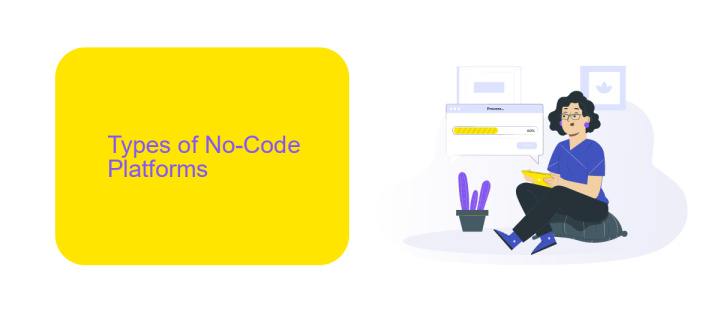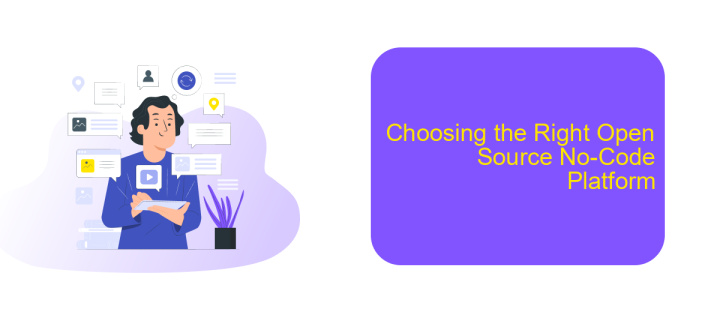No-Code Platform Open Source
No-code platforms have revolutionized the way individuals and businesses approach software development by enabling the creation of applications without traditional coding. Open-source no-code platforms take this innovation a step further, offering flexibility, customization, and community-driven improvements. These platforms empower users to build, modify, and share applications freely, democratizing technology and fostering a collaborative development environment.
Introduction to No-Code Platforms
No-code platforms have revolutionized the way businesses and individuals create software applications. These platforms enable users to build functional apps without needing extensive programming knowledge. This democratization of software development has opened up new opportunities for innovation and efficiency.
- Ease of use: Drag-and-drop interfaces make app creation intuitive.
- Cost-effective: Reduces the need for hiring specialized developers.
- Speed: Allows for rapid prototyping and deployment.
- Flexibility: Easily integrates with other tools and services.
One of the key advantages of no-code platforms is their ability to integrate with various services effortlessly. For instance, ApiX-Drive allows users to automate workflows by connecting different applications without writing a single line of code. This not only saves time but also enhances productivity by ensuring seamless data flow between systems. As a result, no-code platforms are becoming an essential tool in the modern digital landscape.
Types of No-Code Platforms

No-code platforms come in various types, each catering to different needs and use cases. Website builders like Wix and Squarespace allow users to create professional websites without any coding knowledge. App development platforms such as Adalo and Bubble enable the creation of mobile and web applications through intuitive drag-and-drop interfaces. Workflow automation tools like Zapier and Integromat help automate repetitive tasks by connecting different applications and services. These tools empower users to streamline processes and enhance productivity without extensive technical expertise.
Another significant category is integration platforms, which facilitate seamless data exchange between various systems. ApiX-Drive, for example, provides a robust solution for integrating diverse applications and automating workflows. This service allows users to connect multiple apps and automate data transfers, ensuring smooth and efficient operations. By leveraging these no-code platforms, businesses can accelerate their digital transformation, reduce costs, and improve agility, all without the need for specialized coding skills.
Benefits of Open Source No-Code Platforms

Open source no-code platforms offer a range of benefits that make them an attractive choice for developers and businesses alike. These platforms provide the flexibility to customize and extend functionalities without the need for extensive coding knowledge, making them accessible to a broader audience.
- Cost-Effective: Open source solutions eliminate licensing fees, reducing overall project costs.
- Community Support: A vibrant community often surrounds open source projects, offering support, plugins, and regular updates.
- Customizability: Users can modify the source code to fit their specific needs, ensuring a tailored solution.
- Integration Capabilities: Platforms like ApiX-Drive facilitate seamless integration with various services, enhancing workflow automation.
- Transparency: Open source code is available for inspection, ensuring higher security and trustworthiness.
These benefits make open source no-code platforms a powerful tool for innovation and efficiency. By leveraging the community-driven development and integration capabilities offered by services like ApiX-Drive, businesses can streamline processes and achieve their goals more effectively.
Choosing the Right Open Source No-Code Platform

Choosing the right open-source no-code platform can be a daunting task, given the plethora of options available. It's essential to consider various factors to ensure the platform meets your specific needs and can scale with your projects.
First, evaluate the platform's ease of use and the learning curve associated with it. A user-friendly interface will enable you to quickly create and deploy applications without extensive technical knowledge. Additionally, check the community support and documentation available, as these resources can be invaluable when troubleshooting issues or learning new features.
- Scalability: Ensure the platform can grow with your project.
- Integration Capabilities: Look for platforms that easily integrate with other tools and services, such as ApiX-Drive, which simplifies API integration.
- Customization: The ability to customize and extend the platform to fit your unique requirements is crucial.
- Security: Assess the security features to protect your data and applications.
Finally, consider the platform's cost and licensing model. Open-source platforms often offer more flexibility and lower costs, but it's essential to ensure that the platform's licensing aligns with your project's goals and requirements. By carefully evaluating these factors, you can select the right open-source no-code platform that will empower you to build robust applications efficiently.
- Automate the work of an online store or landing
- Empower through integration
- Don't spend money on programmers and integrators
- Save time by automating routine tasks
Future of Open Source No-Code Platforms
The future of open source no-code platforms looks incredibly promising as they continue to democratize software development. These platforms are breaking down barriers, allowing individuals without technical backgrounds to create complex applications. As more developers and businesses recognize the value of open source, we can expect a surge in community-driven innovations, making these platforms even more robust and versatile. The collaborative nature of open source ensures continuous improvement and adaptation to emerging technologies, keeping pace with the rapidly evolving tech landscape.
Integration capabilities will also play a pivotal role in the future of no-code platforms. Tools like ApiX-Drive are setting the standard by enabling seamless connections between various applications and services. This makes it easier for users to automate workflows and enhance productivity without needing to write a single line of code. As the ecosystem of no-code solutions expands, the ability to integrate effortlessly with other tools will become a critical feature, driving widespread adoption and fostering a new era of innovation and accessibility in software development.
FAQ
What is a No-Code Platform?
How can No-Code Platforms be used in businesses?
Are there open-source No-Code Platforms available?
How do No-Code Platforms handle integrations with other software?
What are the limitations of No-Code Platforms?
Time is the most valuable resource in today's business realities. By eliminating the routine from work processes, you will get more opportunities to implement the most daring plans and ideas. Choose – you can continue to waste time, money and nerves on inefficient solutions, or you can use ApiX-Drive, automating work processes and achieving results with minimal investment of money, effort and human resources.


